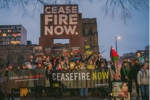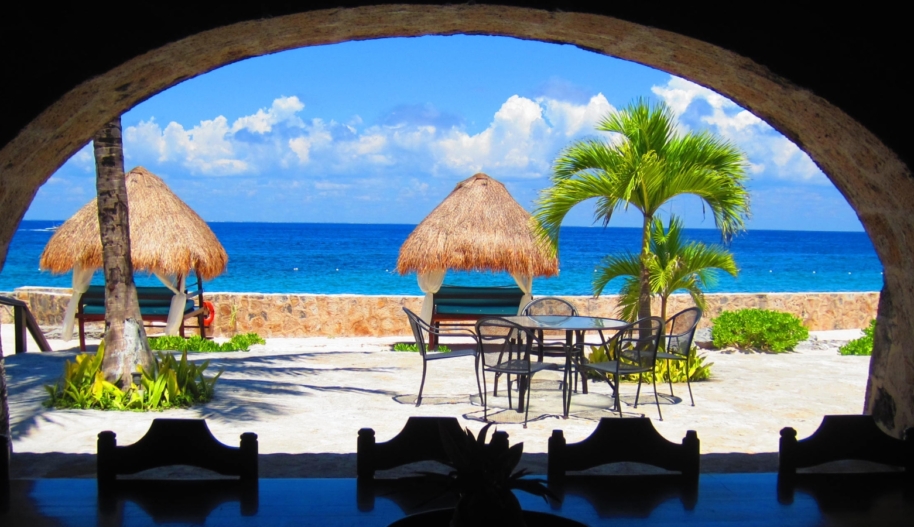Travel guides describe Mexico as one of the world’s great civilisations, whose landscapes are as stunning as they are diverse. But there’s a dark flipside to the family-friendly resorts and shimmering blue coastlines: there is an epidemic of torture in Mexico.
Here we look at some sickening facts about torture in Mexico and what you can do to help.
1. Reports of torture in Mexico are 600% higher than in 2003
Torture in Mexico is, quite frankly, out of control. In the last ten years alone, there has been a 600 per cent rise in the number of reported cases of torture. Between 2010 and the end of 2013, the National Human Rights Commission received more than 7,000 complaints of torture.
An Amnesty survey recently found that a whopping 64 per cent of Mexican citizens are afraid they would be tortured if they were ever to be detained by the police. In the same survey, Australia and China came out at 16 per cent and 25 per cent respectively.
2. How are people tortured in Mexico?
Torture techniques in Mexico all have one thing in common: they’re brutal.
Survivors from around the country report a multitude of torture techniques, including mock executions, cruel beatings, stress positions, asphyxiation,
electric shocks and sexual violence.
In 2009, Ángel Amílcar Colón Quevedo, a migrant who had travelled to Mexico hoping to earn money to pay for cancer treatment for his eight-year-old son, was arrested and tortured by the Mexican police and army solely because of his ethnicity and his status as a migrant.
Ángel was beaten and kicked repeatedly by his captors, forced to lick clean the shoes of other detainees, nearly asphyxiated with a plastic bag.
3. The police and military forces are in on it
Frighteningly, those tasked with protecting the public and upholding justice often carry out horrific torture during criminal investigations.
Torture is often overlooked because it is considered “necessary” to enable the police and military to catch suspected offenders and reassure public opinion. Amnesty has spoken to many torture survivors who said they would have said and done anything to make the pain stop.
In September 2012, Adrián Vázquez was arrested by the police and subjected to 12 hours of torture, during which time he was threatened, beaten and asphyxiated. Eventually Adrián was rushed to hospital to undergo life-saving surgery because of his injuries.
An investigation into Adrián’s treatment by police was never ordered or carried out.
4. The Mexican Government doesn’t want you to know
They know it’s happening, we know it’s happening, yet the Mexican Government has so far refused acknowledge the widespread torture across the country.
On paper, Mexico’s commitment to preventing torture is impressive, having ratified, among other things, the UN Convention against Torture. Yet despite its own laws, the government allows torture to be used to get confessions, and Mexican courts regularly accept such confessions.
What’s more, the Mexican Government lets torturers get away with it – only seven people have ever been convicted in Mexico’s federal courts.
But there is hope. Mexico is sensitive about its public image and is showing signs it is open to improving the way it deals with torture.
Don’t miss this rare opportunity – act now against torture.
5. The poor and powerless are easy targets
Many arrests in Mexico are made without a warrant, with people sometimes being arrested without having any direct connection to a crime or crime scene.
Those arrested without evidence are often from poor communities and they have little chance of accessing legal support, which increases their risk of suffering torture.
People who are tortured, their relatives, and those activists defending their human rights often face threats and intimidation. As a result, very few victims are willing to make formal complaints.
6. But…the situation isn’t hopeless
Since 2002, Inés Fernández Ortega and Valentina Rosendo Cantú have been fighting for justice against the Mexican soldiers who tortured and raped them in separate attacks.
In August 2010 Inter-American Court of Human Rights ordered a full civilian investigation, as well as reparations to Inés and Valentina and reforms to Mexico’s military justice system.
Earlier this year the Mexican Government took a huge step towards justice for the two women, by finally bringing the accused to trial.
7. Believe it or not, you can help.
In the early hours of 7 August 2012 Claudia Medina, a mother of three woke to the frightening sound of marines breaking into her home in Veracruz City, Mexico.
Claudia, a natural medicine salesperson, was arrested and taken to a local naval base.
Over the next few days, Claudia suffered terrible torture, including electric shocks and sexual abuse, being beaten and kicked. Her torturers even forced chilli sauce up her nose with a syringe.
To make the torture stop, Claudia signed a statement she hadn’t read, later discovering it was a false confession that she belonged to a criminal gang. Claudia maintains her innocence.
Spare 30 seconds to sign our petition and join the global movement to get justice for Claudia.













